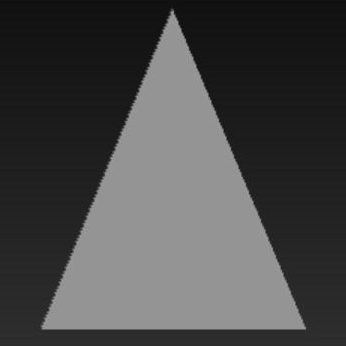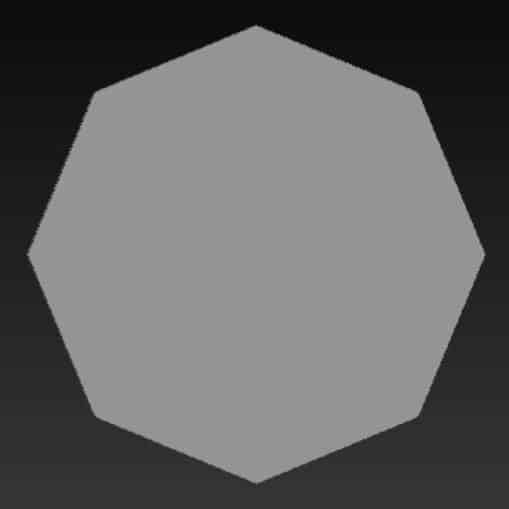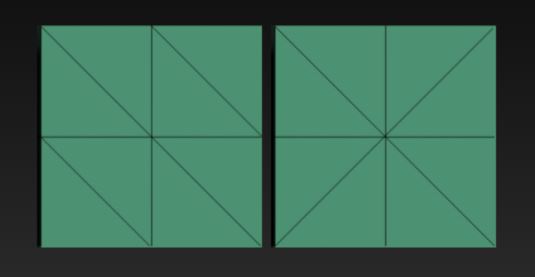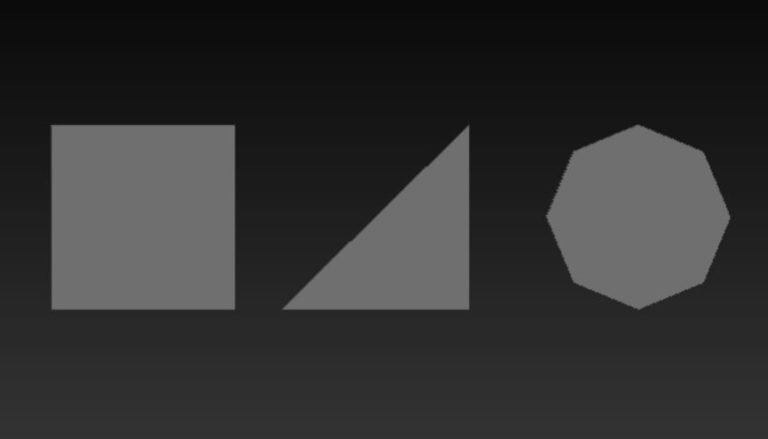There are so many mixed opinions in the 3d modelling industry as to the proper use of quads triangles and Ngons. It is easy to become utterly confused at times. From my experience and research I have found the below has worked for me.
When 3d modelling quads are recommended to assist with creating the mesh, however when it comes to texturing, rendering and sometimes animation triangles can be advantageous. This is due to to the fact different render engines triangulate meshes differently. Ngons should always be avoided and will cause undesired effects. Render engines may even have trouble importing models using them.
What are Triangles Quads and Ngons

Triangles: Or usually referred to as Tris for short is a single poly that consists of 3 vertices with edges connecting them. This is the smallest possible polygon you can make.

Quads: As you would expect consists of 4 vertices with edges connecting them. A quad does not have to be an exact square or rectangle provided it has 4 vertices its a quad.

Ngon: This is a shape that has more than 4 vertices. There is no limit to the number of points or sides an Ngon can have.
Why is There Confusion About Which to Use
3d modelling can be a very technical task and there are a lot of methods that can be used to achieve the same result, as such there are a wide array of solutions to the same problems. This is one reason why there is much debate as to which method is correct.
When first learning 3d modelling personally I found there are a lot of mixed messages about how your topology of your mesh should be. From the research I did I managed to get a sense that everyone recommended to always use quads to avoid ngons and triangles where possible. In my head quads were all I should use and I did this at the detriment of speed and accuracy.
How Triangles Can be Helpful
Using only quads somewhat worked for me until I started making some game props and kept hitting a weird issue. Some weird artefacts kept appearing in my textures in different render engines such as Substance Painter compared to Blender. Nothing seemed to fix it even after hours adjusting topology and re-texturing.
With some investigation and experimentation I learnt render engines perform a process called triangulation before rendering and the algorithms can differ between programs.
What is Triangulation
Triangulation is a process a render engines use when they render an image on the screen. The process involves converting anything that is not a triangle (quads and ngons) into triangles to make the rendering process more efficient. Each render engine uses a different algorithm to achieve this.
Why Triangulation a Problem
Refer below for example. When triangulation happens a quad is split in 2 to produce 2 triangles. When this happens the render engines algorithm has 2 choices to split the quad. Substance Painters algorithm might do it one way and Blender may do it the other. This can result in unpredictable results particularly in your texturing.

This problem is more noticeable particularly in game props where the quad density is usually a lot less. This means any differences between programs result in larger areas of the model being affected.
How do we Overcome this Issue
To fix this problem is simple TRIANGLES. All you have to do is triangulate the final mesh before baking and texturing. For me this goes against what I learnt however this actually works. This approach leaves no room for the render engine to guess how to triangulate and will produce a more consistent result every time regardless of render engine.
Most of the bigger 3d modelling packages have built in functions to do this.
Where Should I use Quads
Quads are essential during the modelling stage for several reasons.
- They give the mesh better readability.
- Quads are easier to model with.
- They allow for predictable subdivision.
Better Readability
By readability I mean you should be able to read the flow of your model easily. This helps you know that if you make a change to one part of a model it will react the way you expect. This is particularly helpful if you are planning on animating your model. Especially in areas that require deformation, for example around the mouth.
Easier to Model
When first putting together a model particularly if you are box modelling and not sculpting a nice clean topology can really help. It allows you to easily add edge loops to give the model more form. It also helps with extruding polys and moving them around.
Identifying any errors in the model is also made easier as you have less points to contend with. Modelling in this fashion can by far improves the efficiency of your modelling saving time if done right.
This of course does not mean you should exclusively use quads, triangles are ok they are not your enemy regardless of what some people may say. You can waste a lot of time by trying to not use them. Limiting their use can be helpful during the modelling process but outright not using them can take attention away from what’s important.
Predictable Subdivision
Subdivision like triangulation is an algorithm most modelling programs use it takes a poly and divides it into 4 polys. For this reason dividing a quad is much easier that dividing a tri or ngon. The purpose of doing this is it gives you more polys to work with allowing you to go into finer detail. For example if you subdivide a 10 poly model it will turn into 40 polys. With 40 polys you can make much more complex shapes than you could with 10.
Below is an example of the difference subdivision can make to a mesh made from quads as opposed to one made of triangles. While they start as the same shape they very quickly change when subdivided making it difficult to continue adding detail to a model using triangles or ngons.

This becomes particularly prevalent when working with curved surfaces. It might not always be possible to avoid triangles but as mentioned limiting them will help limit the amount of issues you will have to fix as you subdivide.
What about Ngons
There are no advantages to Ngons these should be avoided at all costs. Render engines can have a lot of trouble with these. They do not deform very well for animation and do not allow for good edge flow. Simply said they add no value and can easily be avoided by using triangles or quads.
As a beginner it is actually easier to create these than you think. The shape of your poly can still look like a tri or quad. The determining factor here is how many vertices are creating the shape, not necessarily what the shape looks like.
My Recommended Workflow
Quads are great and should be used during the modelling process with a conservative use of triangles. By doing this it should assist with easily and cleanly modelling. Under no circumstances should Ngons be used.
Before baking and texturing I would recommend to save a working file of your model before you triangulate in case you need to make changes later. I would then triangulate my mesh and move onto the baking and texturing stage.
By triangulating you will ensure all your texture maps are correct and are going to work correctly the first time. This limits the amount of rework required saving lots of time.
This is the process I use however it’s important to understand especially with 3d modelling there is more than one way to do things. You may have a different method that better suits your workflow and I highly encourage you to experiment. The best way to learn is to research, experiment and never give up.

